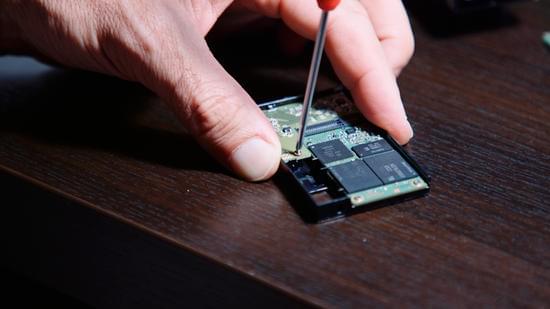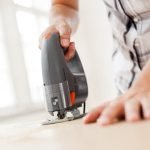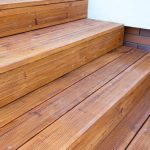Are you tired of dropped calls and slow internet speeds at home? In this article, we will explore how to improve cell reception at home. For many people, having reliable cell reception is essential for both personal and professional reasons. Whether you need to stay connected with loved ones or work from home, a strong cell signal is crucial. Understanding the factors that affect cell reception and implementing practical solutions can make a significant difference in your daily life.
One of the most frustrating aspects of modern technology is poor cell reception at home. Many factors contribute to this issue, from the location of your home to the type of cellular provider you have. We will discuss common issues affecting cell reception and how they impact your ability to stay connected. By understanding these challenges, you can take proactive steps to address them and improve your overall experience with cellular communication.
In the following sections, we will delve into various methods for improving cell reception at home. From choosing the right cellular provider to using Wi-Fi calling and installing a cell signal booster, there are several strategies you can implement to enjoy consistent and reliable cell reception.
Additionally, we will provide tips for improving cell reception without additional equipment, offering practical advice for optimizing your cellular connection within your home environment. If you’re ready to say goodbye to dropped calls and weak signals, continue reading to discover how to enhance your cell reception at home.
Common Issues Affecting Cell Reception at Home
When it comes to cell reception at home, there are several common issues that can affect the quality of your signal. It’s important to understand these issues in order to effectively improve your cell reception. Some of the most common issues affecting cell reception at home include:
1. Distance from the Nearest Cell Tower: The distance between your home and the nearest cell tower can significantly impact your cell reception. The farther you are from a cell tower, the weaker your signal is likely to be.
2. Building Materials: The materials used in your home, such as concrete, metal, and energy-efficient windows, can interfere with cell signals and decrease reception quality.
3. Interference: Interference from electronic devices, appliances, and even weather conditions can disrupt cell signals and result in poor reception.
Understanding these common issues is crucial when seeking ways to improve cell reception at home. Once you have identified the specific challenges impacting your signal, you can take steps to address them and enjoy better cell reception overall.
It’s also important to remember that addressing these issues may vary depending on which cellular provider you are using. In the next section, we will explore how choosing the right cellular provider can make a significant difference in improving your cell reception at home.
Choosing the Right Cellular Provider for Better Reception
When it comes to improving cell reception at home, choosing the right cellular provider can make a significant difference. Here are some key considerations to keep in mind when selecting a cellular provider for better reception:
- Coverage area: Before choosing a cellular provider, check their coverage map to ensure that they have a strong network in your area. Look for providers that offer extensive coverage in both urban and rural areas.
- Network technology: Different cellular providers use different network technologies such as 4G LTE, 5G, and CDMA. Research which network technology is most compatible with the devices you use and ensure that the provider offers reliable coverage using that technology.
- Customer reviews: Research customer reviews and ratings of different cellular providers to gauge the quality of their service and signal strength. Look for feedback specifically related to home reception to get an idea of the provider’s performance in residential areas.
Choosing a cellular provider with strong coverage in your area and reliable network technology can significantly improve cell reception at home. Additionally, reading customer reviews can provide valuable insights into the real-world performance of different providers. By carefully considering these factors, you can select a cellular provider that offers optimal reception for your specific location and needs.
Utilizing Wi-Fi Calling to Improve Cell Reception
One effective way to improve cell reception at home is by utilizing Wi-Fi calling. This technology allows you to make and receive calls, as well as send text messages over a Wi-Fi network instead of using your cellular network. This is particularly useful in areas where the cellular signal is weak, but a Wi-Fi signal is strong. Many smartphones and cellular providers offer this feature, making it a convenient option for improving communication at home.
Wi-Fi calling not only helps with voice calls and text messages, but it can also improve your data connection. When connected to Wi-Fi, you can experience faster internet speeds and more reliable data transmission, especially in areas where the cellular data signal may be limited. This can be beneficial for various online activities such as streaming videos, browsing the web, or using social media applications.
Another advantage of Wi-Fi calling is its cost-effectiveness. When making calls or sending texts over Wi-Fi, it does not consume your cellular minutes or incur additional charges. This can be helpful if you have limited minutes on your cellular plan or if you frequently communicate with people in other countries, as many providers offer international calls at no extra cost when done through Wi-Fi calling.
| Advantages | Details |
|---|---|
| Improved Communication | Allows for voice calls and text messages over Wi-Fi |
| Better Data Connection | Faster internet speeds and more reliable data transmission |
| Cost-Effectiveness | No additional charges for calls or texts sent over Wi-Fi |
Installing a Cell Signal Booster for Enhanced Reception
One effective way to improve cell reception at home is by installing a cell signal booster. A cell signal booster, also known as a cell phone repeater, works by amplifying and rebroadcasting the cellular signal within your home. This can significantly improve your call quality, data speed, and overall connectivity.
How Does a Cell Signal Booster Work?
A cell signal booster consists of three main components: an outside antenna, an amplifier, and an inside antenna. The outside antenna is placed on the roof or exterior wall of your home to capture the existing weak cellular signal. The amplifier then boosts this signal and sends it to the inside antenna, which rebroadcasts the enhanced signal throughout your home. This process effectively extends the coverage area of your cellular network within your property.
Choosing the Right Cell Signal Booster
When selecting a cell signal booster, it’s important to consider factors such as the size of your home, the strength of the external cellular signal, and the number of users/devices that will be using the boosted signal. Be sure to choose a booster that is compatible with your cellular provider’s network frequency bands to ensure optimal performance.
Utilizing Femtocell Technology for Improved Reception
Femtocell technology is a great solution for individuals looking to improve their cell reception at home. It works by creating a miniature cell phone tower in your own home, providing a strong and reliable signal for your mobile devices. This technology essentially acts as a personal mini cellular tower, allowing you to make clear calls and have fast data speeds without relying solely on your cellular provider’s network.
One of the main advantages of femtocell technology is that it can significantly improve indoor cell reception. Since the signal is coming from within your home, you no longer have to worry about being too far from the nearest cellular tower. This can be especially beneficial in areas where the surrounding buildings or geographical features may obstruct traditional cell signals.
In addition to improving cell reception, femtocell technology also offers enhanced security features. Because the signal is contained within your home, it reduces the risk of unauthorized access and hacking compared to using public Wi-Fi networks. This added layer of security can give users peace of mind when making calls or browsing the internet at home.
| Advantages | Benefits |
|---|---|
| Improves indoor cell reception | Clear calls and fast data speeds |
| Enhanced security features | Reduces risk of unauthorized access and hacking |
Tips for Improving Cell Reception at Home Without Additional Equipment
Improving cell reception at home can often be accomplished without the need for additional equipment. Sometimes, a few simple adjustments and techniques can make a significant difference in the strength and clarity of your cell signal.
Find the Best Spot in Your Home
One of the easiest ways to improve cell reception at home is to find the best spot in your house where the signal is strongest. This may involve moving around different rooms or even going outside to see where the signal is clearest. Once you’ve identified the best location for cell reception, try to spend more time in that area when using your phone.
Keep Your Phone Charged
Believe it or not, keeping your phone fully charged can actually help improve cell reception. When your phone’s battery is low, it may not be able to search for and maintain a strong signal as effectively. By keeping your phone charged, you can ensure that it is operating at its optimal capacity for receiving and maintaining a clear cellular connection.
Avoid Signal Interference
Signal interference from other electronic devices in your home can sometimes disrupt cell reception. Try to keep your phone away from sources of interference such as microwave ovens, cordless phones, baby monitors, and other wireless equipment. Additionally, thick walls and metal objects can also interfere with cell signals, so try to keep these obstacles to a minimum within close proximity to where you use your phone most frequently.
By implementing these simple tips, you can potentially improve cell reception at home without investing in additional equipment or services. These practical strategies may result in a noticeable enhancement of your cellular connection within the comfort of your own residence.
Conclusion
In conclusion, having consistent and reliable cell reception at home is essential for staying connected with loved ones, being reachable for work, and enjoying the benefits of modern technology. By understanding the common issues affecting cell reception at home and taking proactive steps to address them, such as choosing the right cellular provider, utilizing Wi-Fi calling, installing a cell signal booster, or employing femtocell technology, homeowners can significantly improve their cell reception.
Furthermore, even without additional equipment, there are simple tips that can help improve cell reception at home, such as finding the optimal location for your phone, keeping it charged, and minimizing obstructions that can interfere with the signal. By implementing these strategies and solutions, individuals can enjoy the convenience of consistent and reliable cell reception within the comfort of their own homes.
Ultimately, with the advancements in technology and various options available to enhance cell reception at home, there is no need for homeowners to struggle with poor signal strength. With the right approach and resources at hand, everyone can experience improved cell reception and stay connected without interruption within their residential spaces.
Frequently Asked Questions
How Can I Make My Cell Signal Stronger at Home?
There are a few ways to make your cell signal stronger at home. First, you can try moving closer to a window or going outside, as obstructions like walls can weaken the signal.
You can also consider using a signal booster or femtocell, which work by amplifying the existing signal or creating a small cell zone within your home. Additionally, Wi-Fi calling and using apps that boost signal strength may help improve your connectivity.
Do Homemade Cell Phone Signal Boosters Really Work?
Homemade cell phone signal boosters may not be very effective and could potentially interfere with your phone’s ability to connect to the network. It’s important to note that tampering with your phone’s internal components could void its warranty and even cause damage.
It’s generally recommended to use commercially available and certified signal boosters rather than attempting DIY solutions.
How Can I Boost My Phone Signal Indoors?
To boost your phone signal indoors, you can start by identifying areas of your home with the best reception and spending more time in those areas when making calls or using data. Using a Wi-Fi network for calls and texts can also help alleviate indoor signal issues.
If these steps don’t provide sufficient improvement, consider investing in a commercial signal booster designed for indoor use. Additionally, minimizing obstructions between your phone and the nearest cell tower may help strengthen your indoor signal.

I’m thrilled to have you here as a part of the Remodeling Top community. This is where my journey as an architect and remodeling enthusiast intersects with your passion for transforming houses into dream homes.





